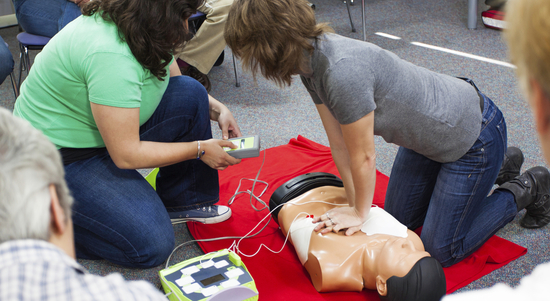Introduction
In serious emergency situations, swift and efficient intervention can indicate the distinction between life and death. This is where top First Aid courses in Salisbury the discussion of BLS vs ALS comes into play. Basic Life Support (BLS) and Advanced Life Assistance (ALS) are two critical points in emergency situation clinical reaction. Understanding when to use each approach can be critical in saving lives.
This write-up aims to dive deep right into the ins and outs of BLS and ALS, aiding you recognize when it's time to call for sophisticated life assistance. With in-depth sections on methods, protocols, and practical circumstances, you'll be fully equipped with understanding that could conserve a life.
BLS vs ALS: Recognizing the Basics of Life Support
What is Standard Life Support?
Basic Life Assistance (BLS) refers to the initial care offered to people experiencing cardiac arrest or breathing failing. It normally entails:
- Checking Responsiveness: Analyzing whether the person is mindful or unconscious. Calling for Assistance: If less competent, calling emergency situation services immediately. Performing mouth-to-mouth resuscitation: Carrying out breast compressions and rescue breaths if necessary.
The Function of Advanced Life Support
Advanced Life Assistance (ALS) encompasses more advanced treatments carried out by experienced medical employees, which may consist of:
- Medications: Carrying out drugs like epinephrine or amiodarone throughout cardiac emergencies. Advanced Air passage Administration: Using intubation strategies to secure the airway. Defibrillation: Making Use Of an Automated External Defibrillator (AED) or manual defibrillator for heart rhythm disturbances.
When Should You Call for Advanced Life Support?
Identifying Medical Emergencies
Recognizing when to escalate from BLS to ALS can be tough. Below are some scenarios:
Cardiac Apprehension: If the individual isn't breathing and doesn't have a pulse after launching BLS. Severe Trauma: In cases of considerable injury where prompt innovative treatment is necessary. Respiratory Distress: If somebody shows signs of choking or extreme trouble breathing after BLS measures.Understanding Hospital Codes and Protocols
Hospitals operate under certain codes relating to emergencies, such as Code Blue for cardiac arrest. Knowing these can direct when ALS must be activated.
Key Techniques in BLS
Checking Casualty's Breathing
One essential step in BLS is looking for breathing:
- Place your ear near their mouth while watching their upper body rise. Look for indications like uncommon breathing patterns or gasping.
Taking Turns on Compressions
If numerous responders exist:

- Alternate every two mins to prevent fatigue. Ensure consistency in compression deepness-- at least 2 inches deep at a rate of 100 to 120 compressions per minute.
ALS Procedures Explained
Lower Compression Depth vs Higher Compression Depth
While BLS concentrates on fundamental techniques, ALS might entail a lot more intensive methods that could alter compression depth based on client needs.
Slow Compression Price: A Common Mistake?
During high-stress situations, responders might reduce their compression rate. Preserving composure is important; staying on par with a consistent speed ensures optimal blood flow.
Public Defibrillator Usage: A Game Changer
How Public AEDs Work
Automated Outside Defibrillators are created for use by laypersons:

Empowering Communities with AED Training
Communities that invest in public defibrillator training see much better survival prices during cardiac events due to quicker action times.
BLS Accreditation: Why It Matters?
Importance of Regular Training Classes
BLS certification courses offer hands-on experience in crucial strategies:
- Ensure you recognize with examining responsiveness and determining no breathing effectively. Refresh skills every few years as standards change frequently.
Certification Bodies and Their Standards
Organizations like the American Heart Association (AHA) set standards that guarantee all licensed individuals are furnished with updated understanding and skills.
BLS vs ALS: Educating Differences
Curriculum Overview
|Training Kind|Duration|Key Skills Covered|| ---------------|----------|--------------------|| BLS|4 hours|CPR, AED usage|| ALS|Varies|Medicine methods, progressed airway administration|
Practical Implications
Knowing exactly how each type of training impacts real-world application can assist -responders pick sensibly in between BLS or awaiting ALS intervention.
Scenarios That Require Immediate Action
Real-Life Instance Studies
A middle-aged man breaks down during a marathon-- what must bystanders do? A child experiences a bronchial asthma strike in the house-- when do you call for help?Each scenario highlights how recognizing BLS vs ALS can aid decision-making under pressure.

FAQ Section
What's the primary difference between BLS and ALS?- The primary distinction depends on training levels; BLS consists of standard treatments while ALS entails advanced procedures executed by medical professionals.
- If you locate somebody less competent and not breathing, start CPR instantly till assistance arrives.
- Yes! Public gain access to AEDs are designed for nonprofessionals; training assists make certain proper use but isn't mandatory.
- It's advised to renew every two years as standards might progress over time.
- Absolutely! Staying tranquil makes certain reliable interaction and correct method execution during crises.
- Hospitals adhere to particular codes like Code Blue which triggers prompt innovative assistance groups upon identification of a cardiac event.
Conclusion
Navigating with life's unforeseen emergency situations requires expertise, quick thinking, and in some cases a little bit of courage-- comprehending BLS vs ALS gives you both clearness and confidence in assessing circumstances precisely. Whether you're a layperson wishing to assist or a medical care expert cleaning up on skills, knowing when to require sophisticated life assistance ensures that every second counts towards conserving lives successfully. As we proceed boosting our emergency reaction systems via education and learning and area awareness, we uphold our cumulative duty in the direction of health and wellness security-- due to the fact that with each other, we can make a difference!
This extensive overview has furnished you with insights into comparing Basic Life Support and Advanced Life Support while highlighting their particular duties throughout emergencies-- since every heartbeat matters!